
flame-thrower
Designer:
Matt Ristrom
Project Category:
Loudspeakers/Cabinets
Project Level:
Advanced
Project Time:
1-8 Hours
Project Cost:
$500 – $1,000
Project Description:
Flame-thrower: Stackable line array speaker for med size indoor or outdoor pro audio use.
Built for Rocky Rude, a notable live audio engineer (and ESPN live video tech). Rocky really likes the look of the PRV’s with the aluminum wave guide and was hoping they would handle more bass than advertised. I was skeptical but the result is an amazingly loud, yet small, line array cabinet.
Design Goals:
1 – Line array physics: stackable, with all drivers coupling correctly.
2 – Very small cabinet
3 – Very high power handling
4 – Extremely high SPL for outdoor concert sound
Driver Selection:
4 x PRV Audio 8MR500-PhP-4 8″ Midbass Midrange Woofer 4 Ohm
4 x PRV Audio WG2-230Ti Two D230Ti Compression Drivers & Line Array Waveguide Package
Enclosure Design:
Sealed cabinet tuned to app. 100hz, 8″ mid-bass aligned vertically with speaker edges touching, horns aligned vertically with edges touching. Pole mount or stacking. Designed to be used with separate sub-woofer system to cover low end up to app. 140hz.
Enclosure Assembly:
3/4 plywood for baffle, 1/2 plywood for box. Glued and nailed. Epoxy added to all seams and corners after construction. Parts express HD stacking corners to allow ground stacking.
The next four cabinets will have added fly-supports for hanging.
Crossover Design:
100hz 2nd order high pass for 8″ mid bass speakers for extra protection as this speaker is designed to be bi-amped. Built in high pass capacitor was removed to allow lower bass.
1000hz 2nd order high pass filter used for horns for extra protection only as this speaker is bi-amped.
Tips & Tricks:
The PRV horn drivers are wider than the space I wanted to leave for the mounting screws. I keep the integrity of the cabinet I used a dremel tool to carve out two bowls in the inside mounting rail for the horn at the top of the cabinet. This allowed me to slide each horn into the cabinet and into position. CON: several horns may need to be removed to make a repair.
Conclusion:
This speaker actually out-performs several JBL, RCF and EAW products for indoor use because it is so good at focusing the sound energy on the crowd and not the walls. At 1250 watts RMS per cabinet it also provides enough SPL to keep up with much larger boxes.
About the Designer:
Matt Ristrom is the owner of Colorsound Recording Studio in DeSoto, Kansas. He has performed on guitar in Minneapolis and Kansas City and auditioned for the Red Hot Chilli Peppers in 1993. Matt is also the owner of RF Consulting LLC a company that has been installing cabling and providing IT support for telephone and computer networks since 1999. Matt has been building and designing speakers since the 80’s.

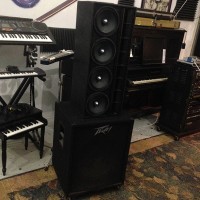
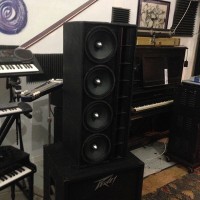
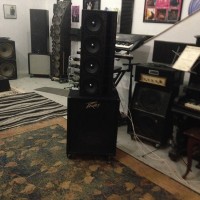
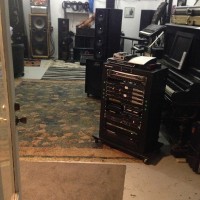
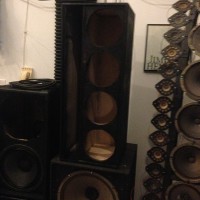
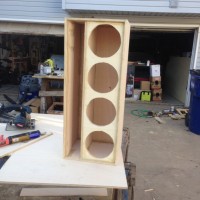
After owning these cabinets for several years now – I still have not blown any drivers. I added rigging hardware to allow the cabinets to fly and built two more with 2 elements (2 x 8″ and 2 x double horns). The system has been used for several outdoor shows with the smaller cabs angled down at 10 degrees for front fill. We are easily covering several thousand people outdoors with this system and we are typically asked to turn down because of the throw. I can get slapback echo from buildings or hills 1/2 mile away from the event and get 110-120db on the crowd if they want it. The only issue has been stacking enough subs to keep up with the system. Indoors, its a dream. You get great clarity even at the back wall because you aren’t bouncing everything off the walls. I love EV and JBL drivers but these little PRV drivers are amazing. 4 cabinets now replaces 16+ old school boxes and we aren’t wasting the power by blowing the sound where we don’t need it.
Just realized – the photos are before adding fold out wings. The wings are mounted on piano hinges and fold out to create a horn. With the cabinets flown together the wings are capped and coupled to create one giant horn with six line array elements and a mouth of over 14′ in diameter which loads efficiently down to their cutoff point. From 100′ away outdoors, folding out the horns has the same effect as using eq to turn up the low mids. Indoors you don’t notice much difference.